When it comes to securing your home, the best approach isn't just about a single gadget or a strong lock. It’s about creating layers—a combination of physical barriers, smart technology, and good old-fashioned community awareness. This kind of multi-faceted strategy is what truly makes your home a tough target for anyone with bad intentions.
Building Your First Line of Defense
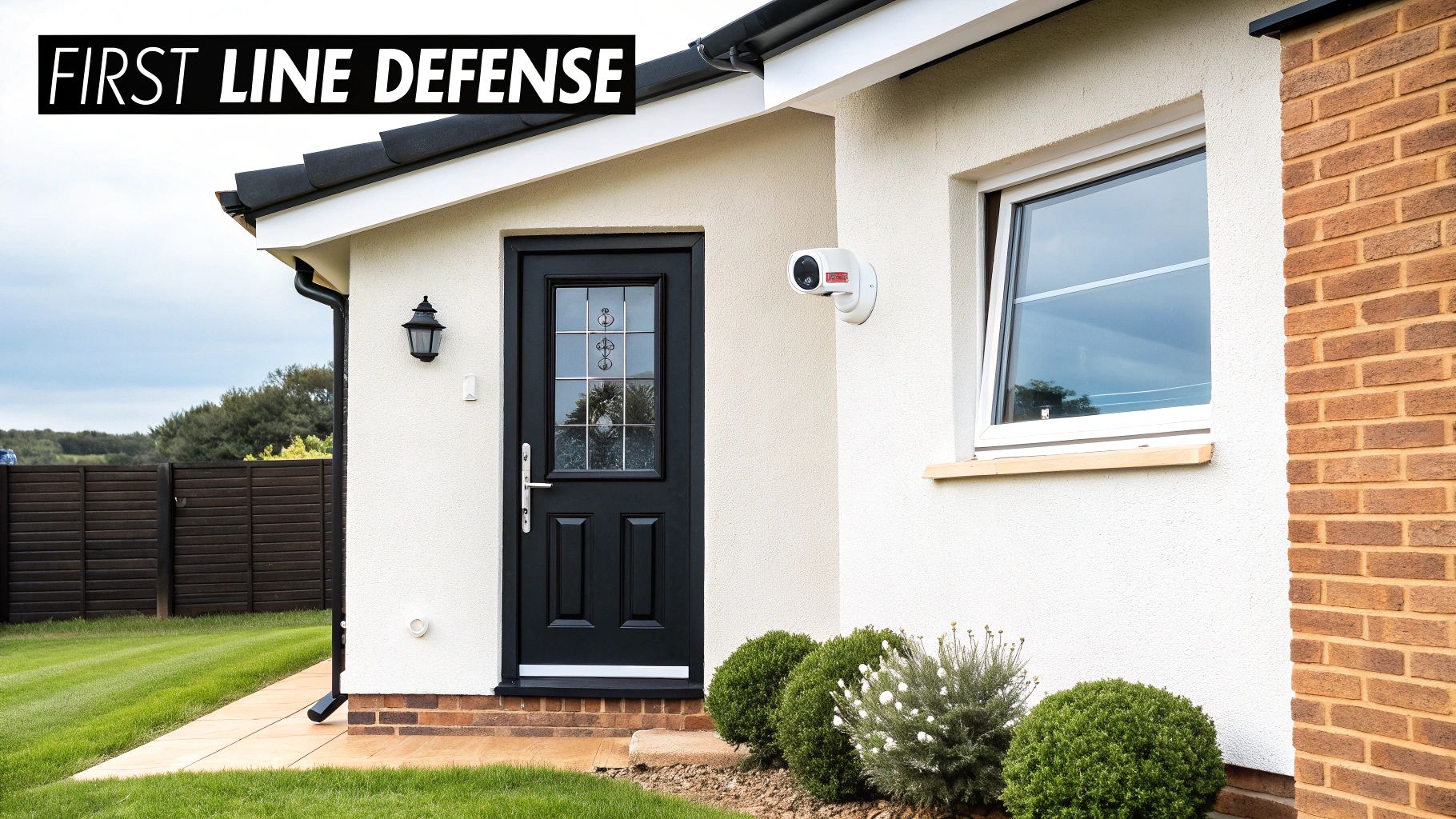
Before you start shopping for the latest tech, let's get the mindset right. Think of your home’s security like a series of concentric circles. Each circle, from your property line to your front door, should present a new challenge to a potential intruder. The whole point is to make their job so difficult and so obvious that they decide it’s not worth the risk and move on.
This really starts with seeing your home through a burglar's eyes. They're on the lookout for the easy score: a house that looks empty, has overgrown bushes to hide in, and no visible signs of a security system. By tackling these weak spots first, you’re already making a huge leap from being reactive to being proactive.
The Three Pillars of Home Security
I’ve found that a truly solid security plan rests on three core pillars. If you neglect one, you're leaving a gap that could compromise everything else you've done.
-
Physical Hardening: This is the bedrock of your security. We're talking about the basics: reinforcing doors with high-quality deadbolts, upgrading flimsy window locks, and even using landscaping to clear out potential hiding spots. It's all about making forced entry as difficult as possible. If you want to get ahead of the curve, you can see how to enhance your doorway and home security in 2025.
-
Technological Deterrents: This is where smart home tech shines. Visible security cameras, video doorbells, and bright motion-activated lights are incredibly effective. Often, just the sight of these devices is enough to send a thief looking elsewhere. Getting the placement right is key, as we cover in our guide to https://automatedhomeguide.com/wireless-security-camera-installation/.
-
Community and Awareness: This one is easy to forget but so powerful. Getting to know your neighbors, joining a neighborhood watch program, and just being observant creates a network of eyes and ears. An alert community is one of the strongest defenses you can have.
To give you a clearer picture, here’s how these elements work together in a layered strategy.
Core Components of a Layered Home Security Strategy
| Security Layer | Key Components | Primary Goal |
|---|---|---|
| Outer Perimeter | Motion-activated lighting, clear landscaping, security signs | Deter intruders before they even reach the house |
| Building Exterior | Reinforced doors, secure window locks, video doorbells, security cameras | Prevent physical entry and record any suspicious activity |
| Interior Defense | Alarm system, smart sensors on windows/doors, indoor cameras | Alert you and authorities immediately if a breach occurs |
This table shows that it's not about one single solution, but how multiple tools work in concert to protect your home from the outside in.
The Power of Visible Deterrents
Never underestimate the psychological game. A home that looks secure often is. The simple act of making your defenses visible can be your most effective tool.
Studies have consistently shown that the presence of a security system is a major turn-off for burglars. In fact, one survey found that about 60% of convicted burglars said they would avoid a house if they saw an alarm system.
This isn't just an interesting statistic; it's actionable intelligence. It confirms that those yard signs, window decals, and clearly visible cameras aren't just for show. They're broadcasting a clear, silent message: "This home is monitored. Move along." By blending these three pillars—physical strength, visible tech, and community watchfulness—you build a formidable defense that brings genuine peace of mind.
Hardening Your Home's Physical Defenses
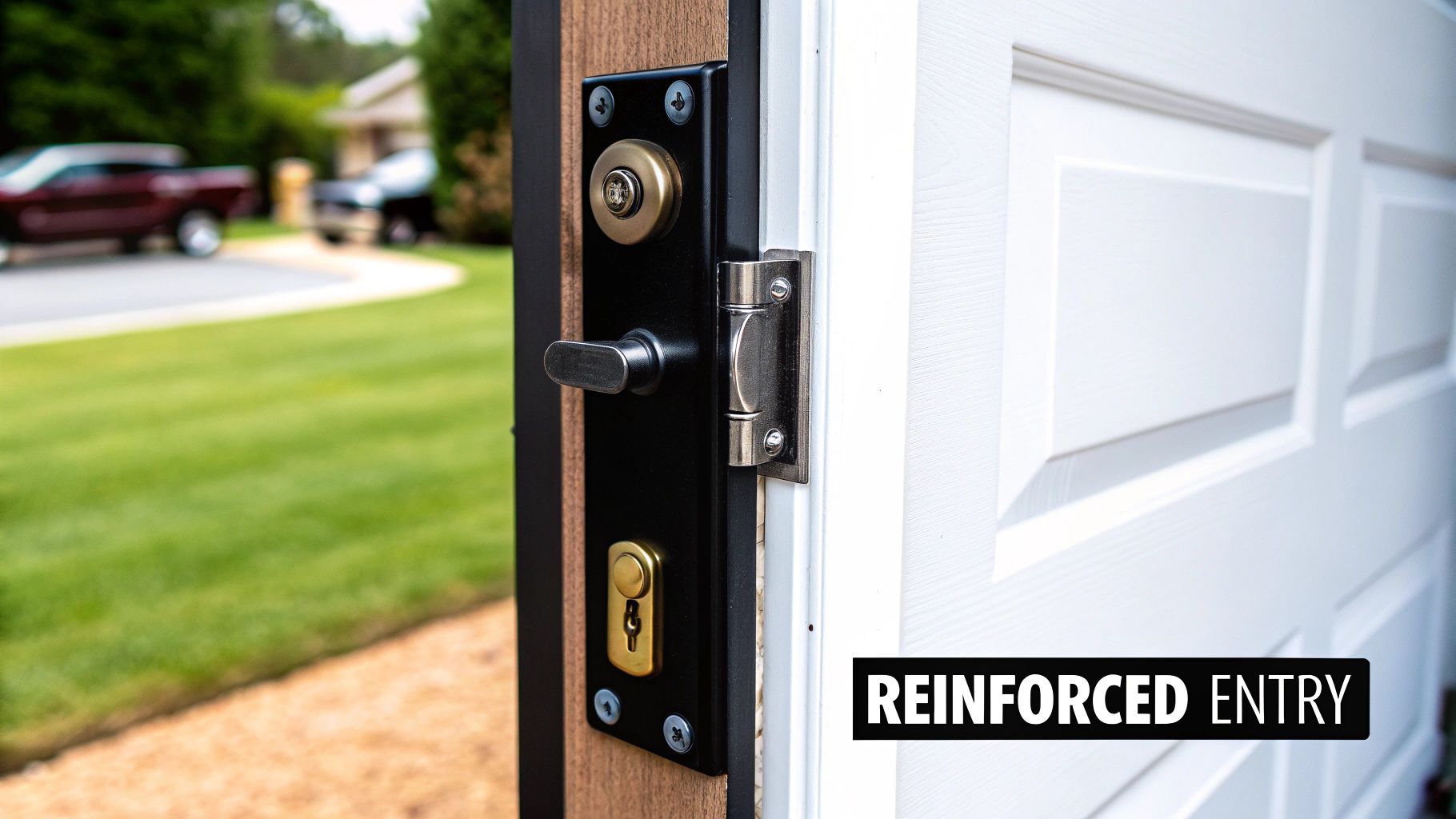
It's easy to get caught up in the latest smart gadgets, but let's not forget where real security starts: the physical structure of your home. Before you even think about cameras and sensors, your first line of defense is a solid, uninviting barrier. Bolstering these core defenses is one of the smartest, most cost-effective moves you can make.
Think about it from an intruder's perspective. Most are looking for an easy score, not a challenge. A weak door, an unlocked window, or a dark, overgrown yard looks like a welcome mat. By shoring up these weak spots first, you make your home a far less attractive target.
Fortifying Your Main Entry Points
Your front door is ground zero for home security, and it’s where I always tell people to start. That standard lock that came with your doorknob? It's just not going to cut it.
The single best upgrade you can make is swapping it out for a Grade 1 deadbolt. This is the highest security rating you can get for a residential lock, and it immediately makes your door tougher to kick in.
But a great lock is useless if the door frame gives way. To really secure it, replace the flimsy factory strike plate with a heavy-duty one. Make sure you use 3-inch screws that bite deep into the wall stud behind the jamb. That’s what gives it real strength.
A few other door details to check:
- Door Material: Is your door hollow? If so, consider upgrading to a solid core wood or metal door. They can take a beating that hollow doors just can't.
- Hinge Security: Take a look at your door hinges. If they're on the outside of the door, an intruder could just pop the pins out. Swap them for security hinges with non-removable pins.
- Mail Slots: That mail slot can be a vulnerability. Someone could potentially reach through to unlock your door. Install a guard on the inside or secure it completely.
Securing Windows and Sliding Doors
Windows are another common weak point, especially on the ground floor or in areas hidden from the street. The flimsy little latches that come standard on most windows can be jimmied open in seconds.
A simple and surprisingly effective trick is to add secondary window locks. Things like sash jammers or hinged wedge locks physically stop the window from opening, even if the main latch is defeated.
Sliding glass doors are notoriously easy to break into because their built-in locks are often weak. The classic fix still works wonders: place a thick, cut-to-fit wooden dowel or a security bar in the track. For even better security, I recommend adding a secondary bolt lock at the top or bottom of the door.
Using Landscaping as a Deterrent
Your own yard can either work for you or against you. Overgrown bushes right up against the house? That’s a perfect hiding spot for someone trying to pry open a window.
You can turn your landscaping into a security feature through what’s called "defensive planting." It’s a great, natural way to protect your home. Try planting thorny bushes like roses or holly under first-floor windows. No one wants to fight through that to get to your house.
Lighting is just as critical. A dark exterior is an intruder's best friend. Motion-activated floodlights are fantastic because the sudden blast of light is often enough to send a would-be burglar running. As you think through this physical setup, it's a good time to consider the backbone of your tech. For a detailed breakdown, it's worth exploring the pros and cons of wireless vs. wired security systems to decide what fits your home best.
Bringing in Smart Tech for Modern-Day Protection
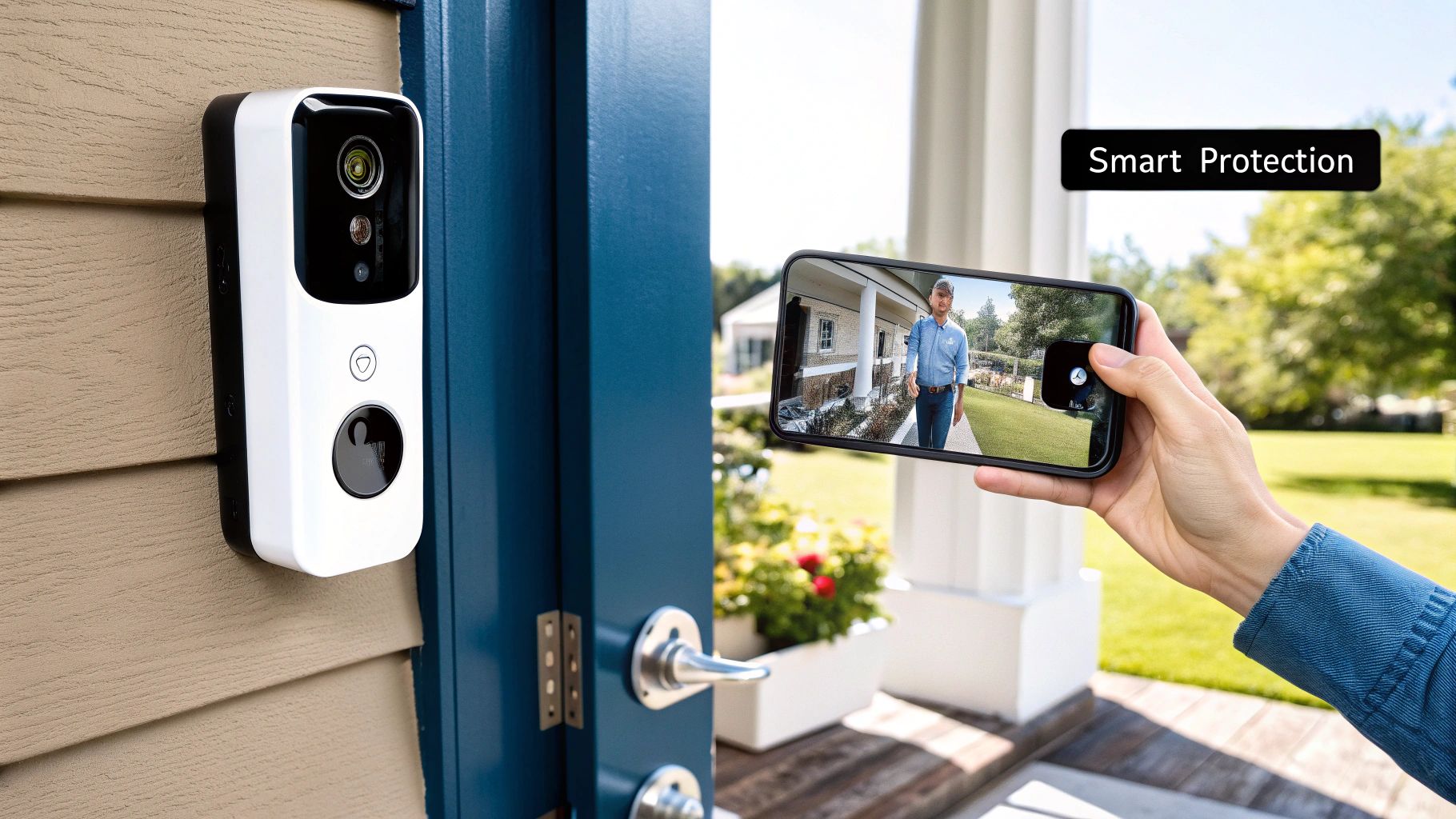
Moving beyond deadbolts and window locks, bringing smart technology into the mix creates a security network that's always on, always watching. This isn’t about cluttering your house with gadgets. It’s about being deliberate, placing smart devices where they’ll work together to stop threats and keep you in the loop. Think of it as a proactive shield that puts total control right in your pocket.
And it's a popular move. People are catching on fast, with 51% of Americans thinking about buying a new security product in the next year. Out of everything available, security cameras are what people want most, which tells you a lot about how we see home protection now. These home security market trends from Research Nester show just how quickly things are changing.
Getting Your Cameras and Doorbells in the Right Spot
A video doorbell is probably the single most powerful piece of smart security you can own. It sits right at your front door, showing you who’s ringing the bell, but more importantly, it keeps an eye on your porch and driveway. These are hotspots for package thieves and other unwelcome visitors.
Of course, you'll need more than just a doorbell for full coverage. This is where outdoor security cameras come in. The whole point is to leave no blind spots for someone to sneak through.
- Watch Every Door and Window: Make sure you have cameras covering the front door, back door, and any windows on the ground floor. Pay extra attention to windows that are tucked away from the street.
- Keep an Eye on Weak Points: A camera pointed at a side gate, a detached garage, or that shed in the back can give you a heads-up before someone even gets close to your house.
- Think About Height and Angle: You want to mount your cameras high enough so they can't be easily tampered with, but not so high that you can't get a clear look at faces. Angle them slightly downward to cover your property without peeking into your neighbor’s yard.
The purpose of camera placement is twofold. Yes, you want clear evidence if something happens. But just as crucial, you want them to be a visible warning sign that your home is not an easy target.
The Power of Being Connected: Remote Monitoring and Alerts
This is where smart security really shines—its ability to connect you to your home from anywhere. A good system will ping your smartphone the second it detects motion, a door opens, or a sensor trips. It doesn't matter if you're at the office or on a beach thousands of miles away; you're always connected to your home's safety.
This constant connection is a game-changer for peace of mind. Get a motion alert from the backyard? Pull up the live feed instantly. See a delivery driver at your door? Talk to them right through your video doorbell's two-way audio. It closes the gap between you and your home. For anyone looking to build a truly cohesive network, our guide on smart home security systems is a great place to start.
Putting Your Defenses on Autopilot with Smart Locks and Lighting
Surveillance is key, but smart locks and lighting bring an entirely different layer of active defense. Smart locks let you do things like grant temporary access to a pet sitter or a repair person without ever giving them a physical key. Plus, you can check that your door is locked from anywhere, ending that "did I lock the door?" panic.
Automated lighting is an old trick, but it's incredibly effective when done right. You can set schedules for lights inside your home to flick on and off in the evening, making it look like you're home, even when you're not. The best systems can even randomize the schedule a bit to look more natural, which is far more convincing to anyone watching from the outside.
Even with the smartest tech in the world, your home security is only as strong as your daily habits. One unlocked door can render the most advanced system useless. This is where you—and your community—come in. Technology gives you the tools, but it's your habits and neighborhood connections that truly lock things down.
It’s about more than just hardware; it's about shifting your mindset to be more security-conscious every single day.
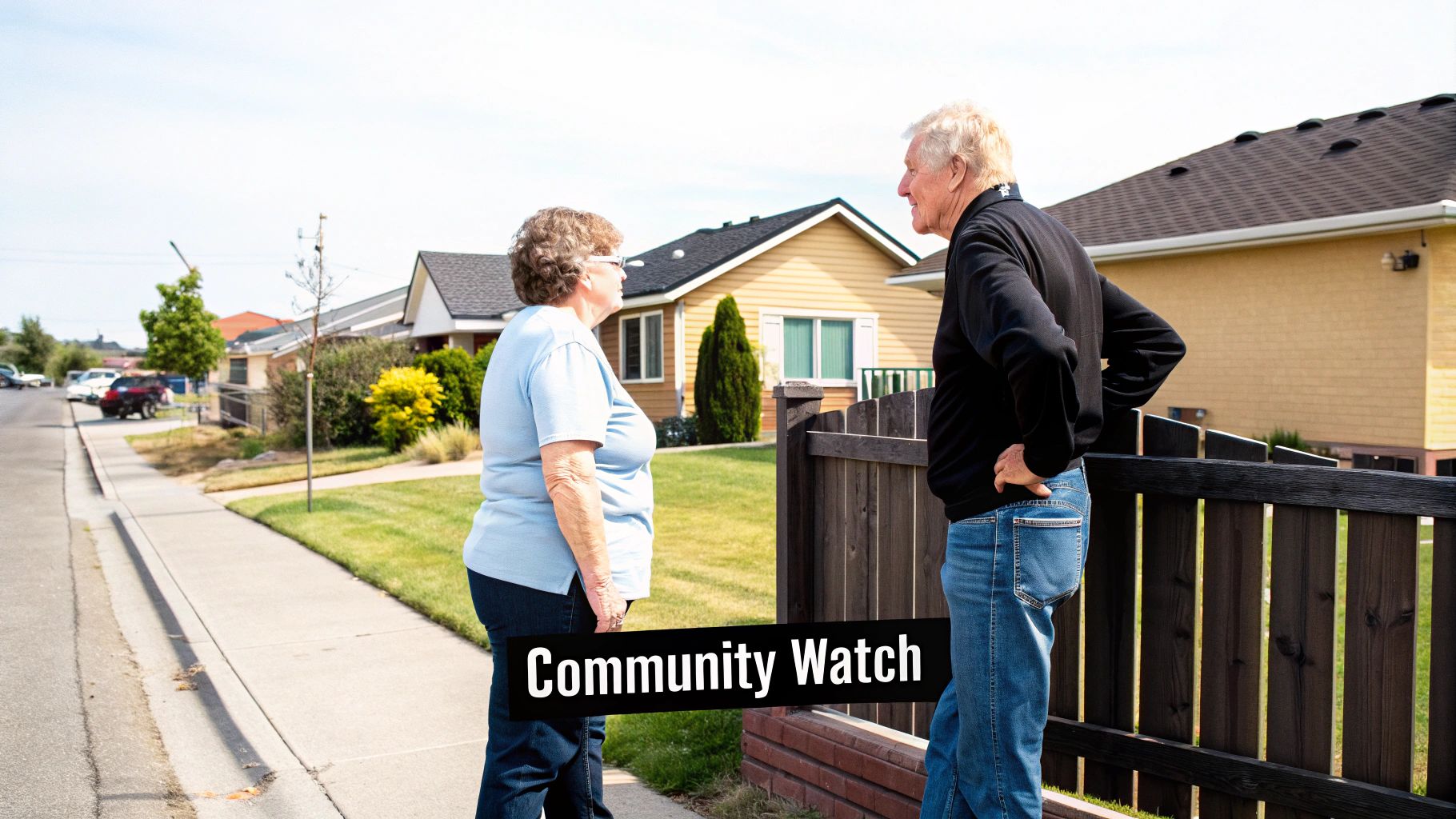
Honestly, one of the most powerful security layers doesn't cost a dime: a connected neighborhood. When people know each other and look out for one another, it creates a natural deterrent. A stranger poking around a yard is far more likely to get noticed in a community where faces and routines are familiar.
Create a Network of Watchful Eyes
Getting to know the people on your block is a surprisingly effective security strategy. You don't have to become best friends, but being on friendly terms makes it easy to ask, "Hey, can you grab my packages while I'm gone this weekend?" You can return the favor, creating an informal web of surveillance that's invaluable.
This is why combining technology with community is so effective. While alarm systems are already protecting over 39 million U.S. households, a shocking 40% of Americans don't use any security measures at all. This is where community platforms like Nextdoor, which had 58 million global users in 2020, can fill the gap by letting neighbors share information and report suspicious activity in real-time. You can find more details in these home security statistics from SafeHome.org.
Taking it a step further, you could join or even start a neighborhood watch program. These groups formalize the communication process and often work directly with local law enforcement to stay ahead of potential threats.
The concept is simple: An alert, engaged community is a burglar’s worst nightmare. More eyes and ears mean criminals have nowhere to hide.
Make Smart Habits Part of Your Routine
Your daily actions are the bedrock of your home security. Inconsistency creates vulnerabilities, so the goal is to turn these best practices into automatic habits. Think of it as a quick mental checklist you run through without even thinking about it.
Here are a few essential habits I always recommend:
- Do a Final Lock-Up: Before you head to bed or leave for the day, do a quick sweep. Are all doors deadbolted? Windows latched? Is the garage door actually closed?
- Hide Your Valuables: Laptops, wallets, and expensive gadgets shouldn't be visible from the street. Leaving them in plain sight is like window shopping for a thief.
- Post on Social Media Later: This is a big one. Avoid announcing your vacation in real-time. You're essentially just advertising an empty house. Share your amazing photos when you get back.
- Manage Your Mail and Deliveries: A pile of packages on the porch is a dead giveaway that you're not home. Ask a neighbor to grab them or have the post office hold your mail.
These small, consistent actions are what make your smart tech and strong locks truly effective. They tie everything together to create a security posture that’s genuinely tough to beat.
Designing Your Personalized Security Plan
Every home has its own quirks and vulnerabilities, so a one-size-fits-all security system just won't do the job. To get security that actually works for you, you need a plan that’s built for your specific property, your daily life, and your budget. The best way to start is to put on your detective hat and become a security expert for your own home.
Start with a simple walk-around. I always tell people to begin outside and look at their property through the eyes of a stranger. Are there dark, shadowy areas perfect for hiding? Is that side gate never locked? Jot down every potential weak spot you find, from overgrown bushes that block the view from your windows to that rusty old lock on the shed.
Conducting Your Home Security Self-Assessment
After you’ve cased the exterior, head inside and think about your family's routines. The whole point is to find solutions that solve your real-world problems, not just add more gadgets.
A good self-assessment starts with a few honest questions:
- What am I most worried about? Is it the constant package deliveries getting swiped from your porch? Or maybe you're more concerned about a break-in while you're away on vacation? Your biggest fear should be your first priority.
- What does my daily life look like? If you have a dog walker or house sitter coming and going, a smart lock that lets you issue temporary digital keys is a game-changer. If you travel a lot, having a system you can check from your phone is non-negotiable.
- What can I realistically afford right now? You don’t have to buy a fortress overnight. Focus on the upgrades that give you the most bang for your buck first, like a reinforced door frame or a simple video doorbell.
A smart security plan isn't about having the most expensive toys; it's about making strategic choices. Get the fundamentals right—strong locks and solid doors—and then layer in technology where it makes the most sense for your family.
Prioritizing Your Upgrades And Creating A Plan
Okay, you've done your homework. Now it’s time to turn that list of vulnerabilities into a real, actionable plan. I find it helpful to sort everything into tiers. A flimsy back door that could be kicked in with one good shove? That’s a high-priority fix you need to tackle this weekend. Adding a camera to watch the driveway, while useful, might be a second-tier goal for next month.
For some, especially those with larger properties or unique security concerns, thinking about hiring a security guard for home protection can be a part of this initial planning phase. It's good to know the full spectrum of options available, from DIY tech to professional services.
Your final plan should feel like a simple roadmap. Maybe it starts with installing a better deadbolt, then moves to adding motion-sensor floodlights, and eventually leads to a full smart camera system down the line. Breaking it down into manageable steps makes the whole process feel less overwhelming and ensures you’re building a truly secure home, one smart decision at a time.
A Few Common Home Security Questions Answered
When people start looking into home security, a few questions always come up. It's completely normal. Let's tackle some of the most common ones I hear, so you can move forward with confidence.
One of the biggest debates is still wired vs. wireless systems. Years ago, wired was the only truly reliable option, but technology has completely changed the game. Honestly, today’s wireless security systems are incredibly dependable and are what most people—and what I typically recommend—are installing.
The big win is the easy installation, since you don't have to start drilling holes all over your house. They use powerful encryption to keep the signal safe from anyone trying to mess with it. The only real catch is that they depend on your Wi-Fi and power. But the best systems have this figured out; they come with cellular and battery backups to keep things running even if your power or internet cuts out.
Is a Security System Really Worth It in a “Safe” Neighborhood?
I get this one all the time: "My neighborhood is safe, do I really need all this?" My answer is always a firm yes. Burglars are opportunistic. They're looking for the easiest target on the block, and a house without any visible security can look like a welcome mat, no matter the zip code. A simple camera or sign is often enough to make them skip your house and look for an easier target.
It's also important to remember that modern systems are about so much more than just stopping break-ins. They can be your first alert for a fire, a carbon monoxide leak, or a water leak in the basement. Your "security system" really becomes a complete home monitoring system, giving you peace of mind whether you're down the street or across the country.
What Are the Best Security Options for Renters?
If you're renting, you might think your options are limited. Not anymore. There are plenty of fantastic ways to secure your space without making any permanent changes that would upset your landlord.
Here are a few simple, non-permanent solutions that make a huge impact:
- Door Jammers: A portable door jammer or a security bar placed at the base of your main doors adds a serious layer of physical resistance. It's a cheap and surprisingly effective trick.
- Wireless Systems: This is where renters can really win. A good DIY wireless system is perfect. The sensors, cameras, and keypads usually attach with simple adhesive strips. When your lease is up, you just pack it up and take it to your next place.
- Video Doorbells: You don't have to drill. Many of the best video doorbells can be installed using a no-drill mount or even by fitting them into your existing peephole.
These renter-friendly gadgets let you build a security setup that feels completely custom and secure, but without any long-term strings attached.
At Automated Home Guide, our whole goal is to help you find smart solutions that just work for your home and lifestyle. If you're ready to dig deeper, check out our expert reviews and guides to build a security plan that fits you perfectly at https://automatedhomeguide.com.
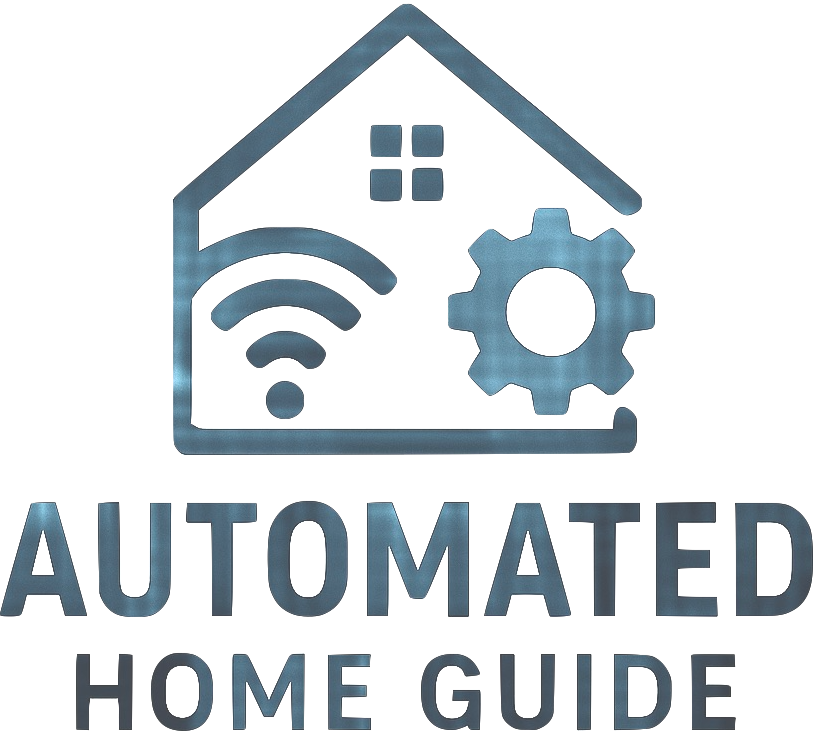
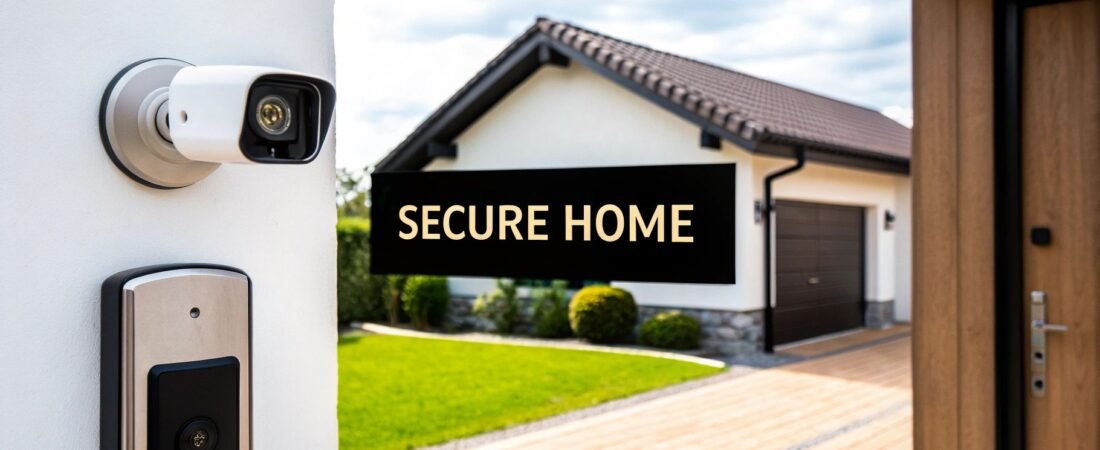
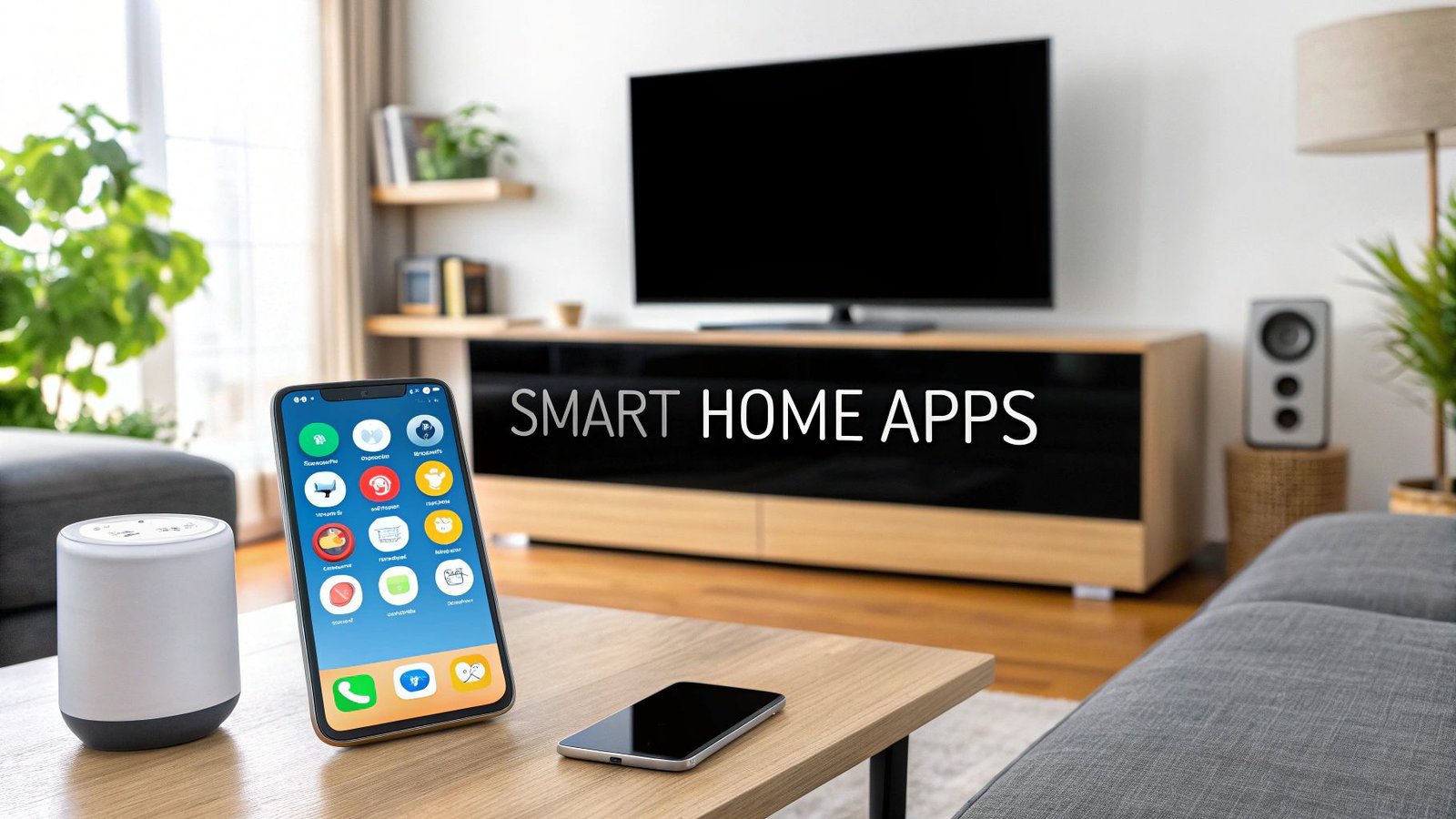
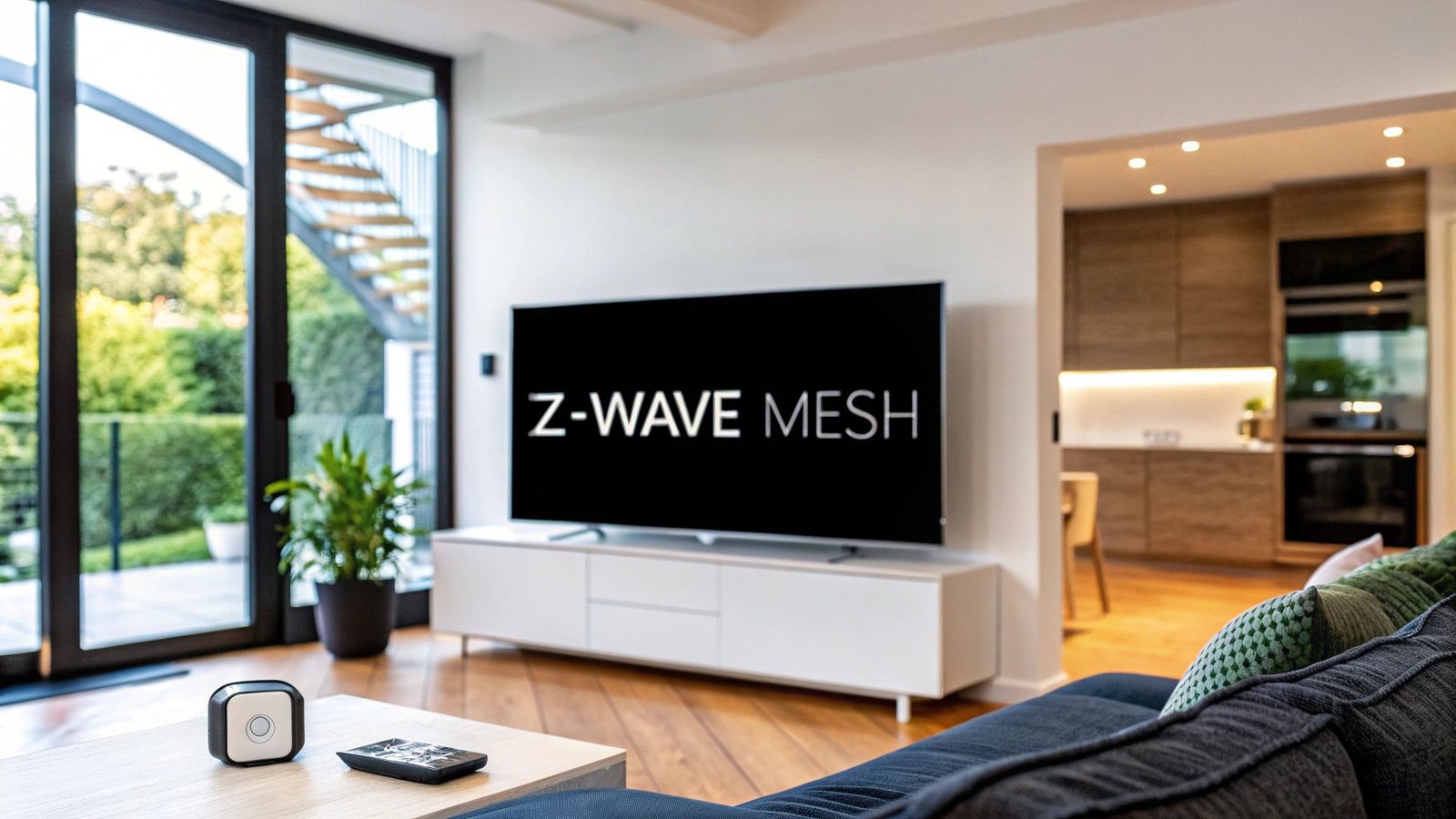
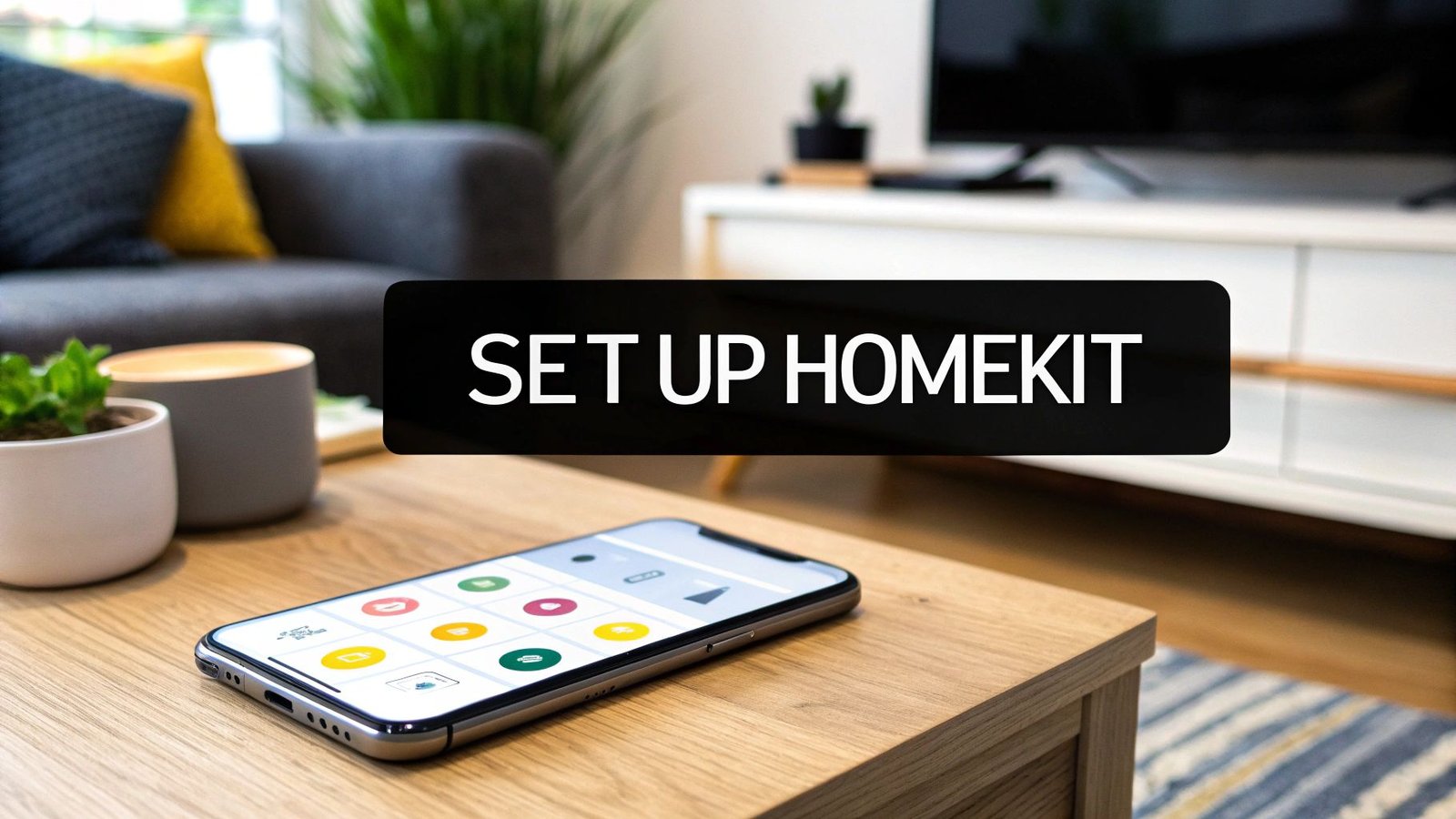
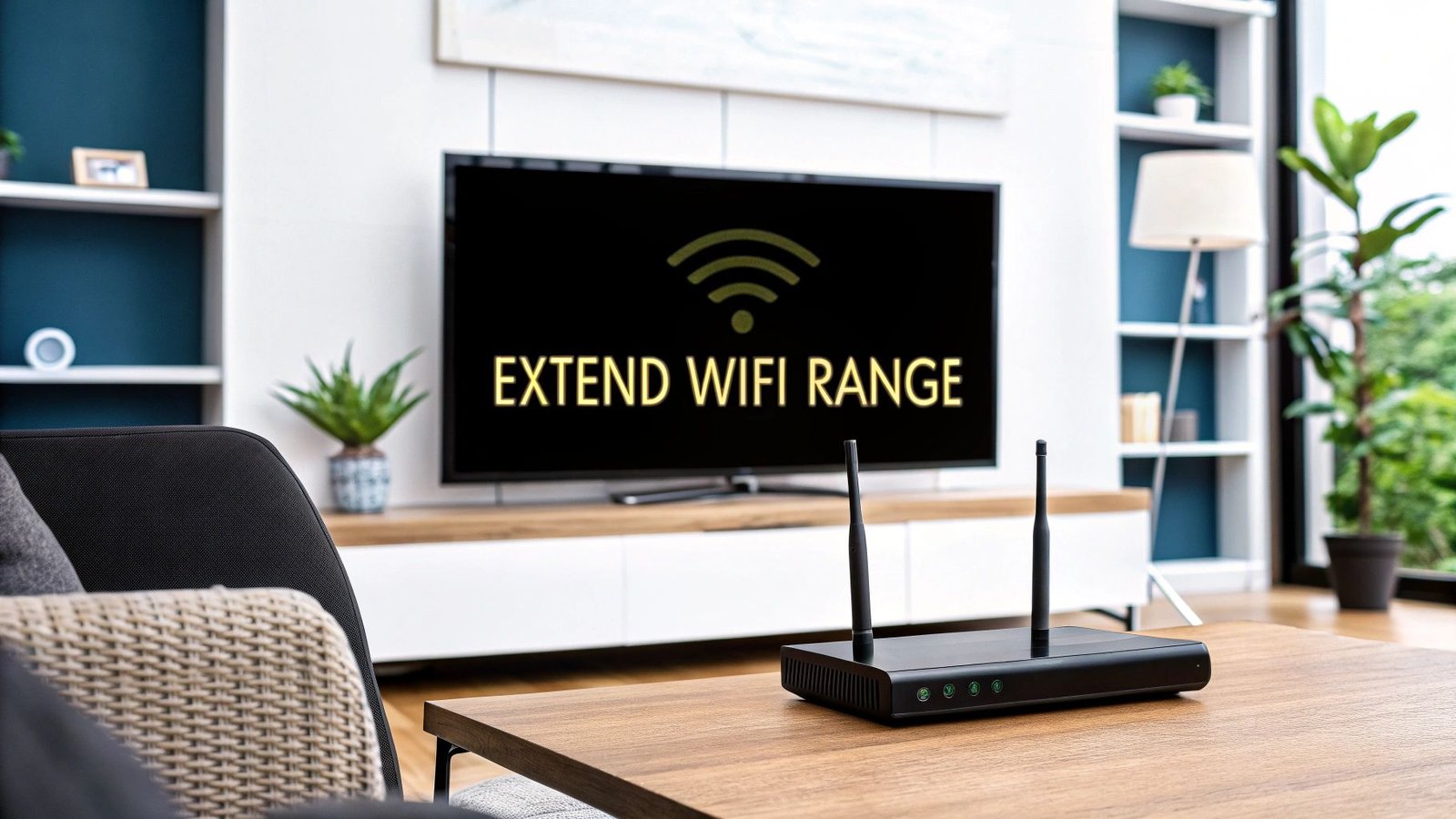
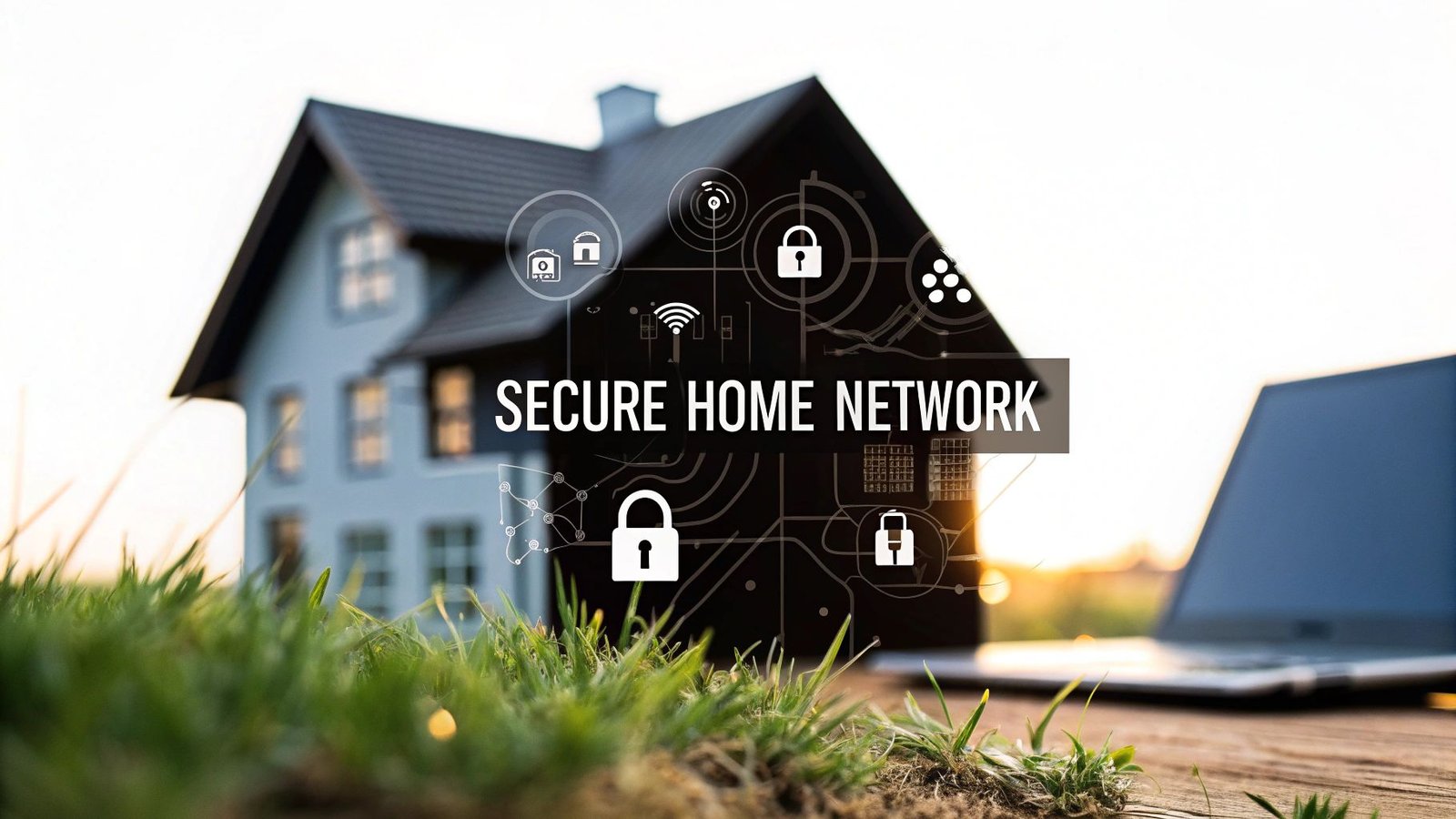
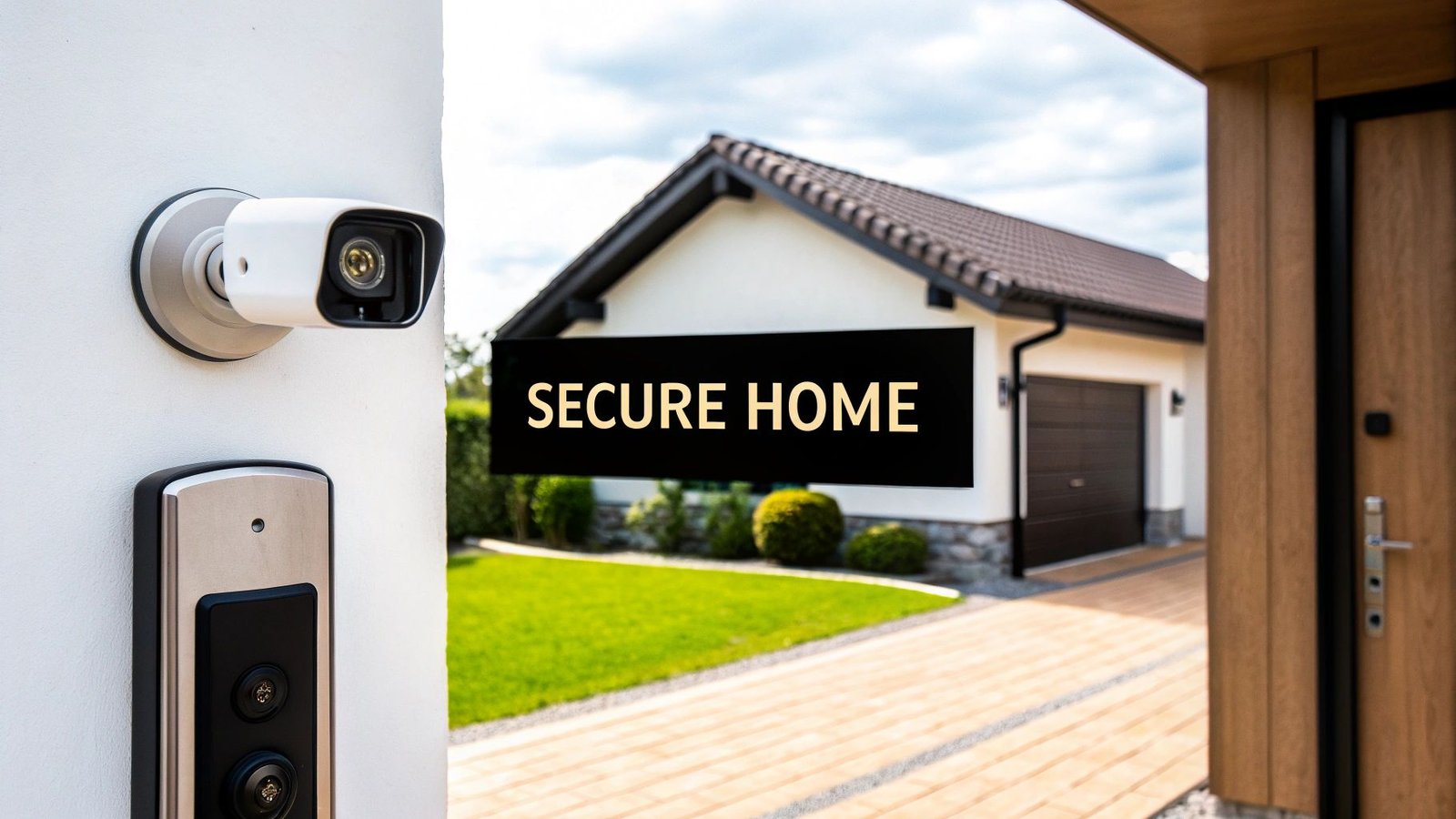
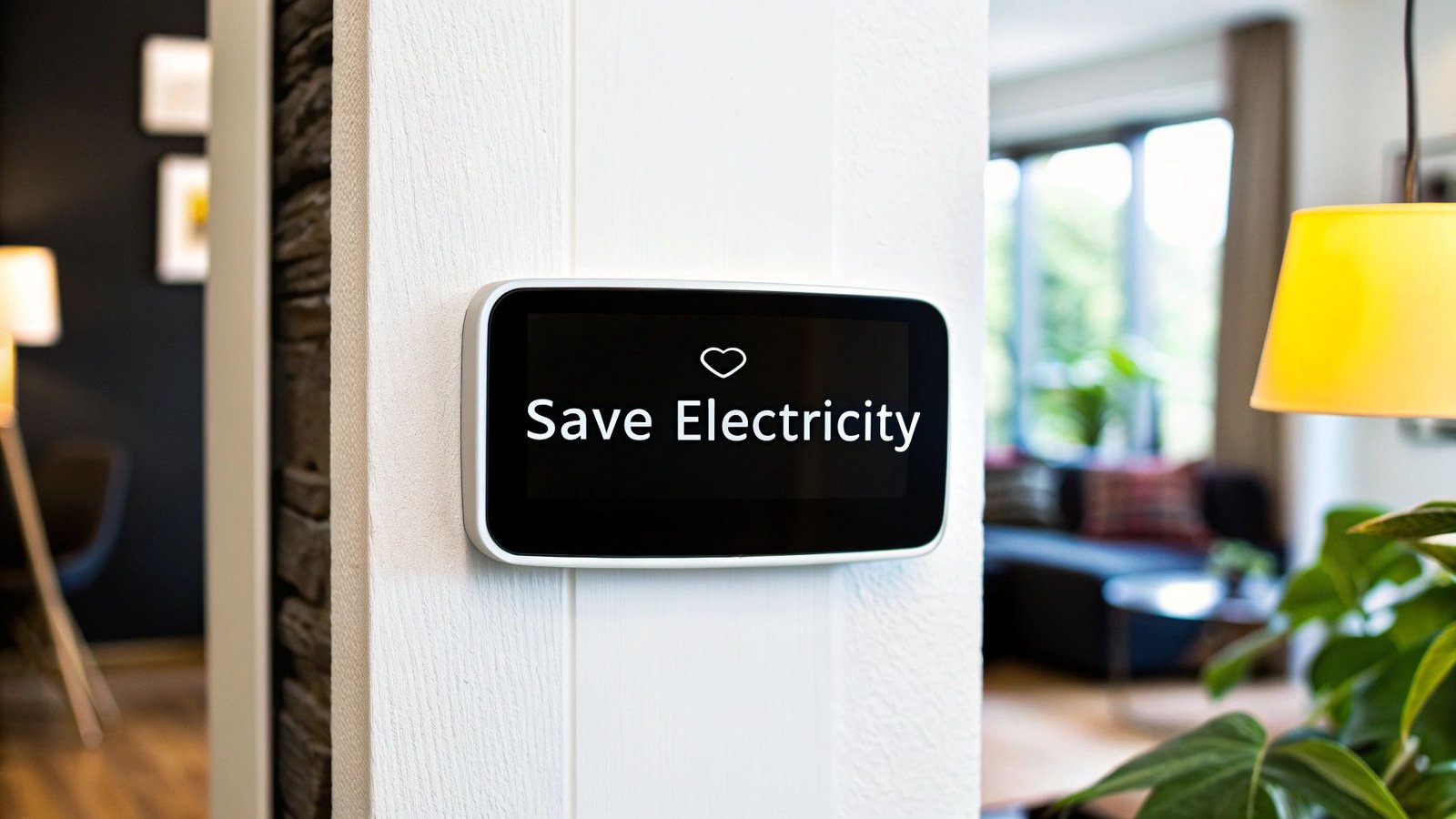
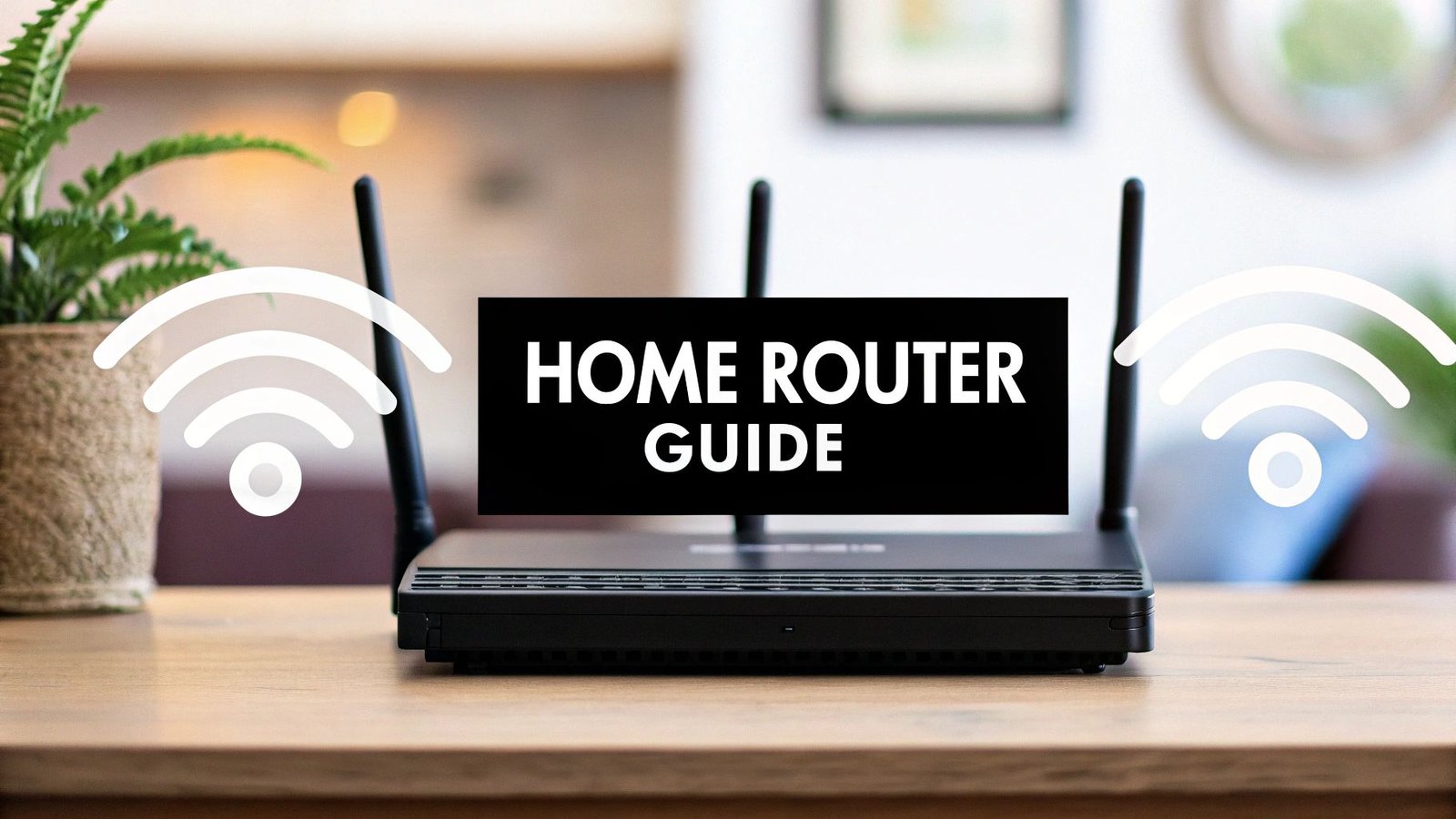
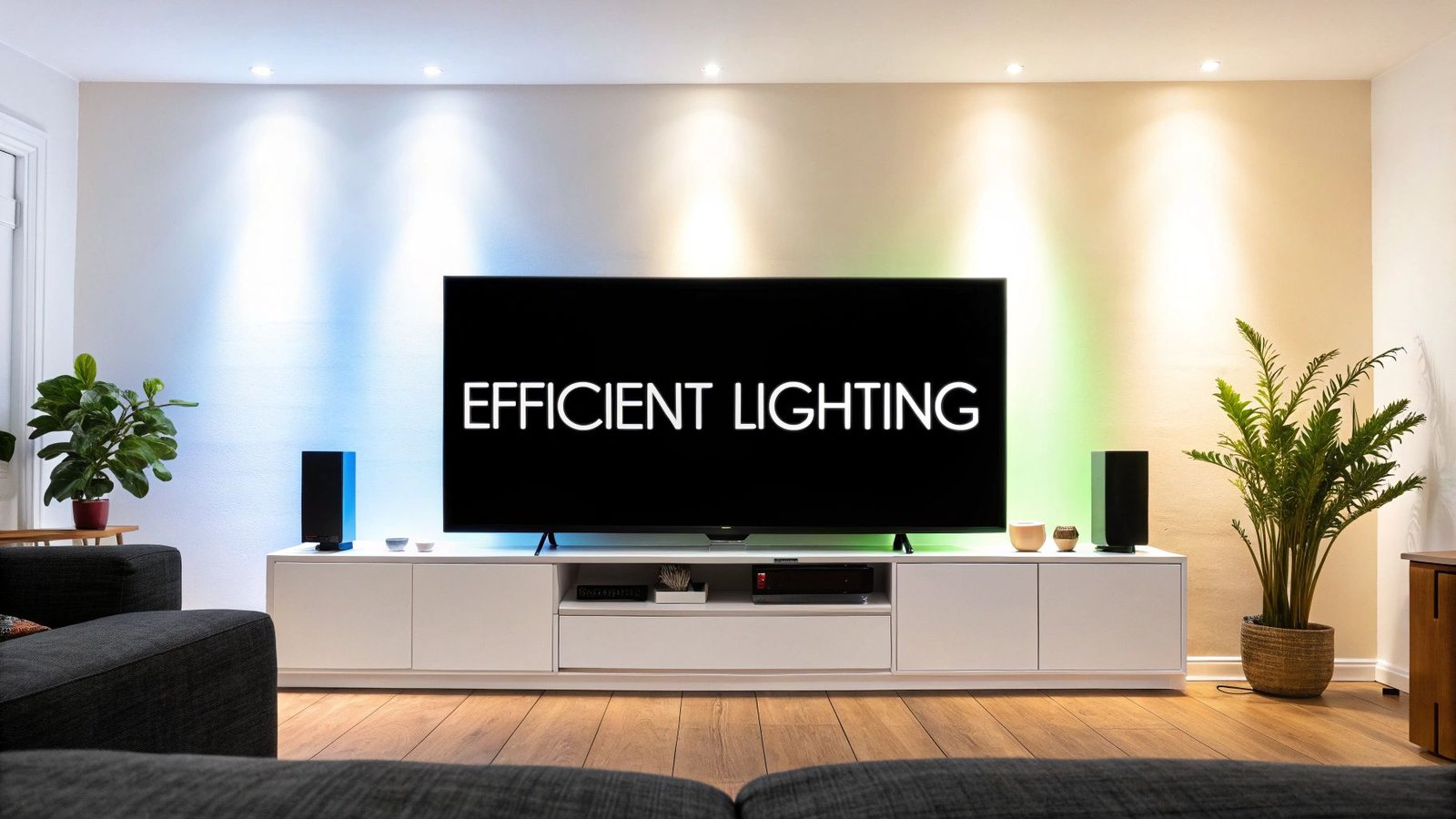
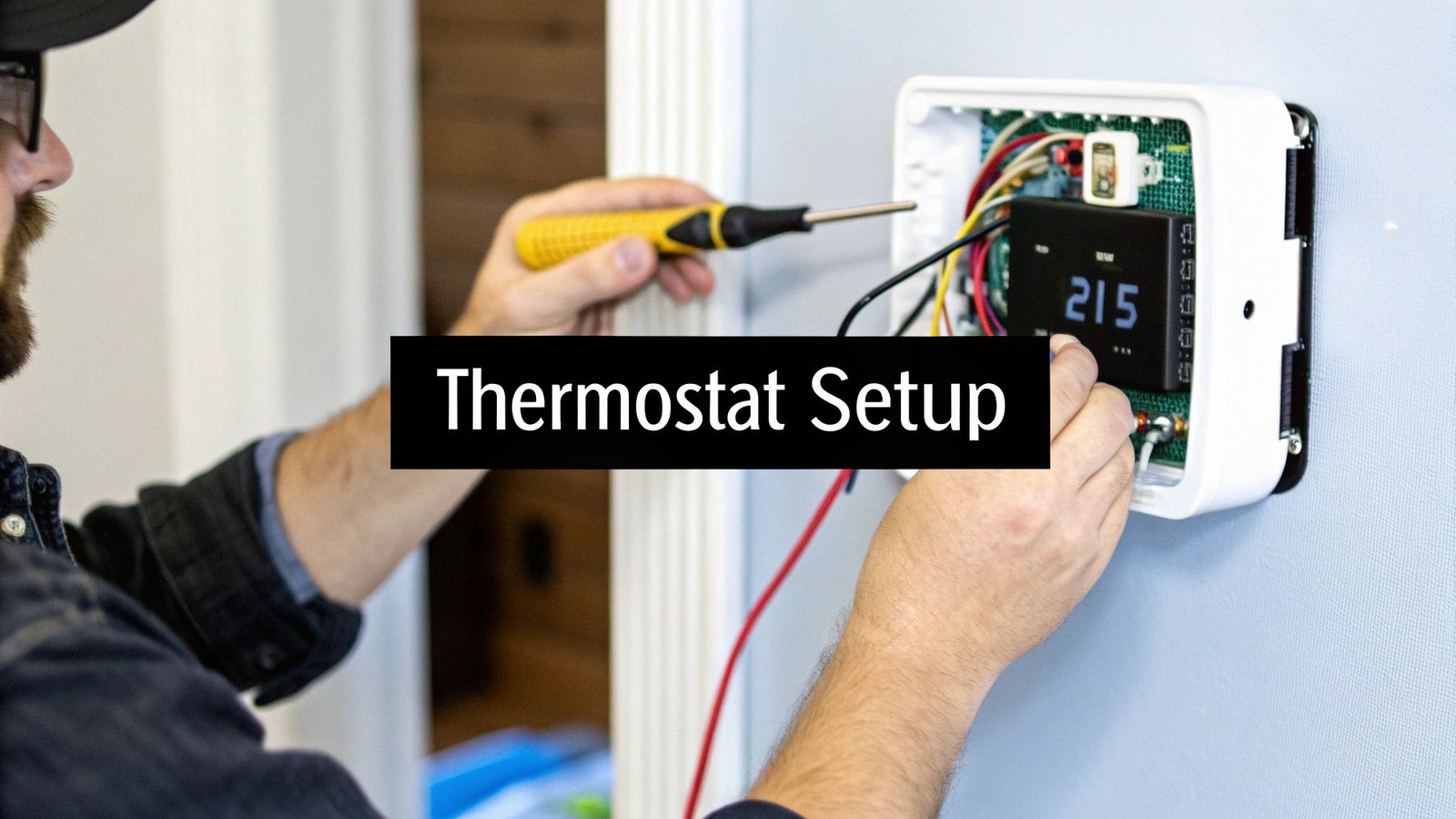
Leave a Reply